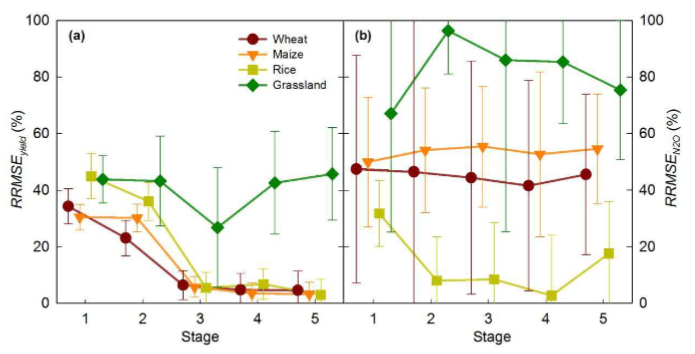
- GO APSIM MODEL SOIL INSTALL
- GO APSIM MODEL SOIL DRIVERS
- GO APSIM MODEL SOIL FULL
- GO APSIM MODEL SOIL SOFTWARE
- GO APSIM MODEL SOIL DOWNLOAD
Left edge of the West most grid cell in the campaign

Top edge of the North most grid cell in the campaign Name of executable and arguments to run for each grid Simulation delta, gridcell spacing in arcminutes ParameterĪggregator options, used to average a variable across a regionĬhecker translator and options, check if a tile should be simulated or not Below is a list of parameters and a description of what it does. It defines things like the number of simulation years, the path to climate input files,Īnd which model to use. The parameter file is a YAML-formatted file containing all the parameters of a pSIMSV2 An example tilelists is provided in the tilelist folder in this repo.Reference dataset is provided in the folder refdata in this repo.
GO APSIM MODEL SOIL DOWNLOAD
Download and extract campaign dataset from.This template aggregates climate daymet data from 1 km resolution to 30 arc-minute resolution to be inputted in pSIMSĪnd following the format established in psims2met.py (see translators folder in this repo). Python package (contact them for more information). Download and extract soil dataset from (if you want to use the FAO Harmonized World Soil Database v 1.2)Ĭlimate data for the USA (1 km resolution)Ī template to convert Daymet climate data to a pSIMS format wasĬreated by the authors of this repo using the PyDaymet.Download and extract climate dataset from (if you want to use AgMERRA climate data).You can also create your own datasets (or use others) and pass it to this tool. AgMERRA climate data is available in the. Harmonized World Soil Database files are available Climate: AgMERRA Climate Forcing Dataset for Agricultural Modelingĭue to the size of these datasets, they are available.
GO APSIM MODEL SOIL FULL
Two full global gridded dataset available for pSIMS users:
.jpg)
Global climate and soil data (30 arc-minute resolution) Note: this packages are in the requirements.txt file at psims/pysims/ĭata inputs are provided for download and other are hosted in this repo. When the user is testing single tiles and not using singularity, it needs to be installed manually.
GO APSIM MODEL SOIL SOFTWARE
This software list is installed automatically when the singularity image is used for runs including several Software dependencies installed by the singularity image Potential areas for energy sorghum in the US under rainfed and irrigated conditions (SS), photosensitive, (PS) and photo-insensitive (PI)] were simulated across the Using the APSIM gridded platform (pAPSIM) within pSIMSV2, four genotypes [grain (GS), sudangrass Of sorghum biomass variability change with genotype and irrigation strategy at regional
GO APSIM MODEL SOIL DRIVERS
Using pSIMSV2 we explored the following questions: which factors (G, E and M)Īre dominant in explaining sorghum biomass variability? and how do the drivers Genotype × environment × management (G×E×M) combinations to ensure potentialīiomass production for bioenergy. Regional scale estimations of sorghum biomass are crucial to identify optimum All examples below are an implementation of pSIMSV2 for APSIM 7.9. The singularity image to run pSIMSV2 are hostedįor APSIM Classic 7.9.
GO APSIM MODEL SOIL INSTALL
The need to install the soft dependencies manually (as in pSIMS).Īlso, we updated some packages were obsolete. We updated pSIMS to pSIMSV2 which is able to run the soft in an Unix Environments with allĭependencies installed by a singularity container without The original pSIMS was developed in 2014 (see paper above), (2014) The parallel system for integrating impact models and sectors (pSIMS).Įnvironmental Modelling & Software 62: 509-516. In a Unix environment (with a focus on primary production: agriculture, livestock, and forestry).įor more information about pSIMS, please see the following paper:Įlliott, Joshua, et al. pSIMS is designed to support integrationĪnd high-resolution application of any site-based climate impact model that can be compiled

Vulnerability, impacts and potential adaptations. In so doing, pSIMSĭramatically reduces the time and technical skills required to investigate global change That extend over large spatial extents, run for many growing seasons, or evaluate manyĪlternative management practices or other input configurations.

Pipelines and allows researchers to use high-performance computing to run simulations The labor-intensive processes of creating and running data ingest and transformation To high-resolution climate impact modeling. PSIMS is a suite of tools, data, and models developed to facilitate access TERRA Project Team involved in the pSIMS application The University of Queensland


 0 kommentar(er)
0 kommentar(er)
